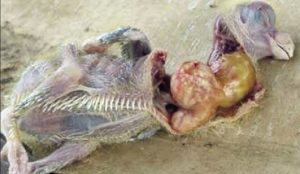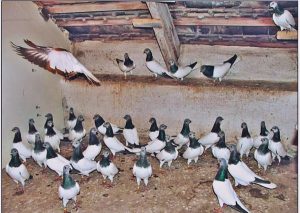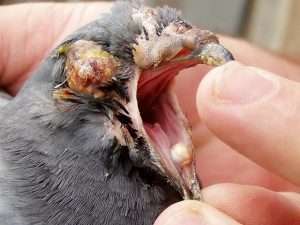Is it true that there are many different strains of the canker-causing organism, Trichomonas gallinae, in pigeons?
*
Yes. These strains can cause diseases of varying severity. At the same time, the disease caused can be diverse, as these pathogens can affect a wide range of organs. It is a big mistake to think that their damage is limited to the yellow button in the oral cavity.
Some strains of trichomonas are weakly pathogenic, causing only a very mild form of the disease. From these, the birds recover completely. These weakly pathogenic strains may be characterised by causing the characteristic yellow button in the throat.
Other strains produce more severe forms of the disease that can kill susceptible birds. These strains are characterised by their ability to cause severe liver disease from which birds often do not recover.
An important consideration may be that the presence of mild strains can act as a vaccine. It primes the birds’ immune system against the strains that cause severe disease. This is why there are opinions that if there are only yellow button one or two pigeons and no other symptoms, it is not advisable to treat the flock against trichomoniasis. This way a natural and mild infection can be maintained, keeping the immune system on standby.
There are exceptions, of course. One of these exceptions relates to racing pigeons. There, even the mildest infection is not allowed, as it seriously impairs racing performance.
Severe infection in a chick. Pairing stress can cause the pathogen to accumulate in the parents, which can be fatal for the youngsters.
Another exception is the breeding season. If the parents carry the pathogen, it can multiply in their bodies due to mating stress. It can reach levels that can be dangerous for the youngsters. Therefore, if you have had a problem with trichomonas in the previous breeding season, be sure to carry out a 3-4 day cleansing treatment before pairing.
If for some reason this is not done, we will make up for it, but only after the laying of the eggs. Do not treat between pairing and laying!








